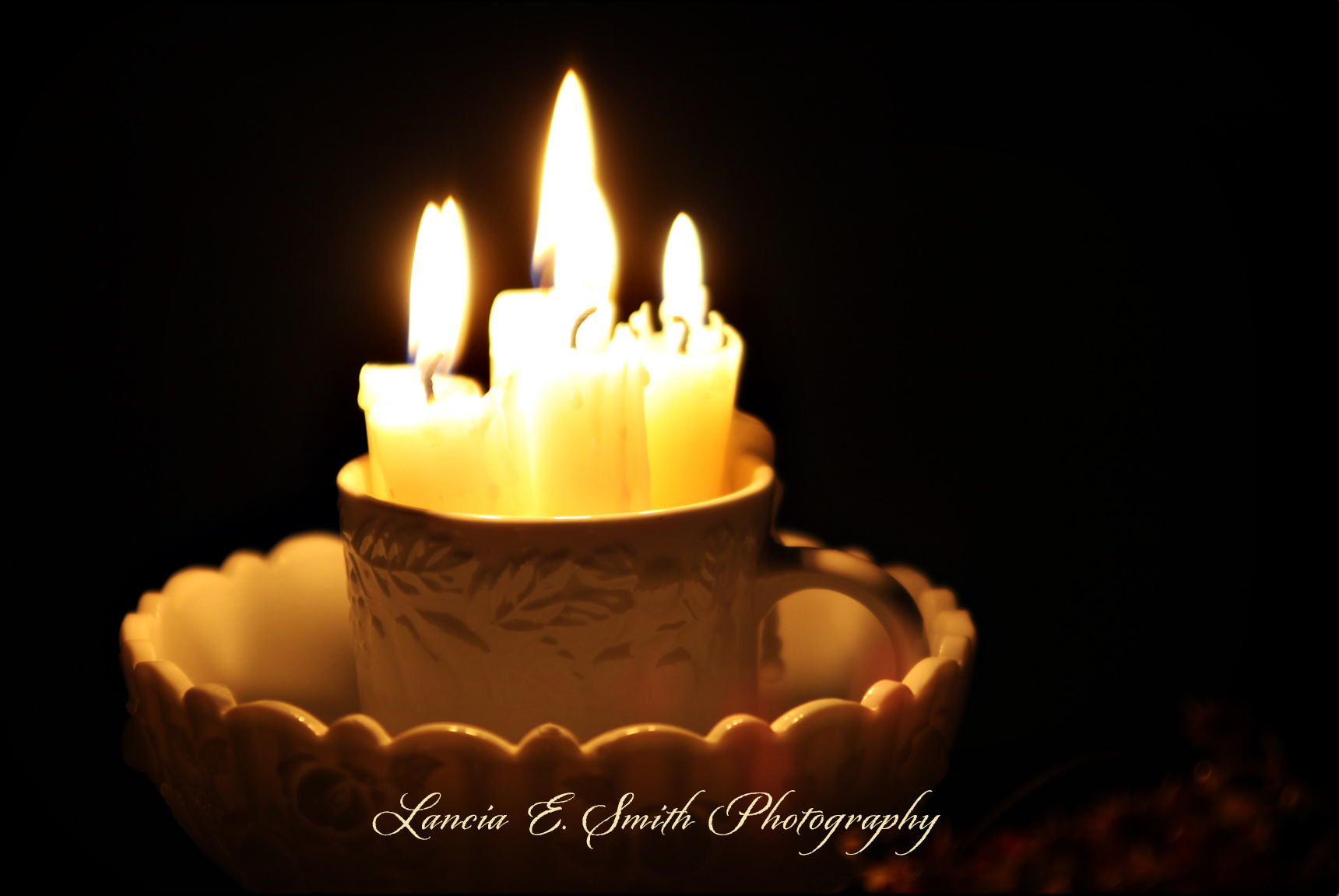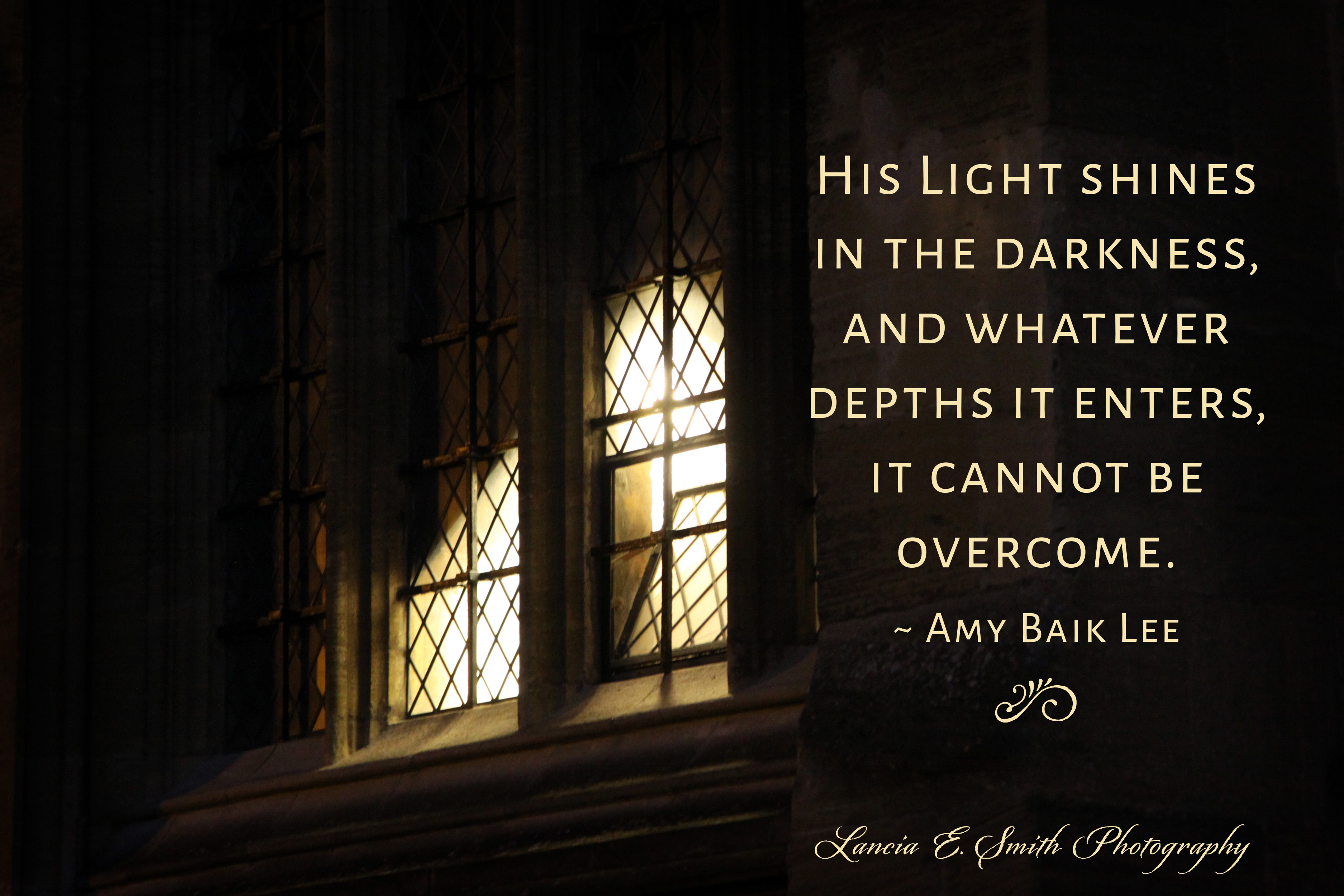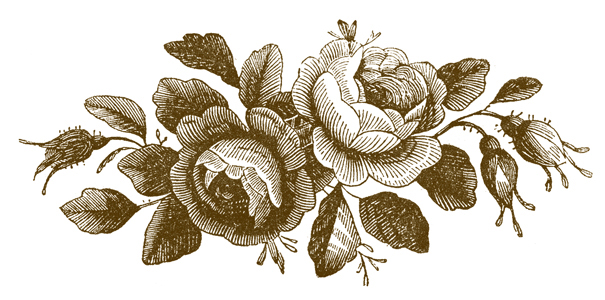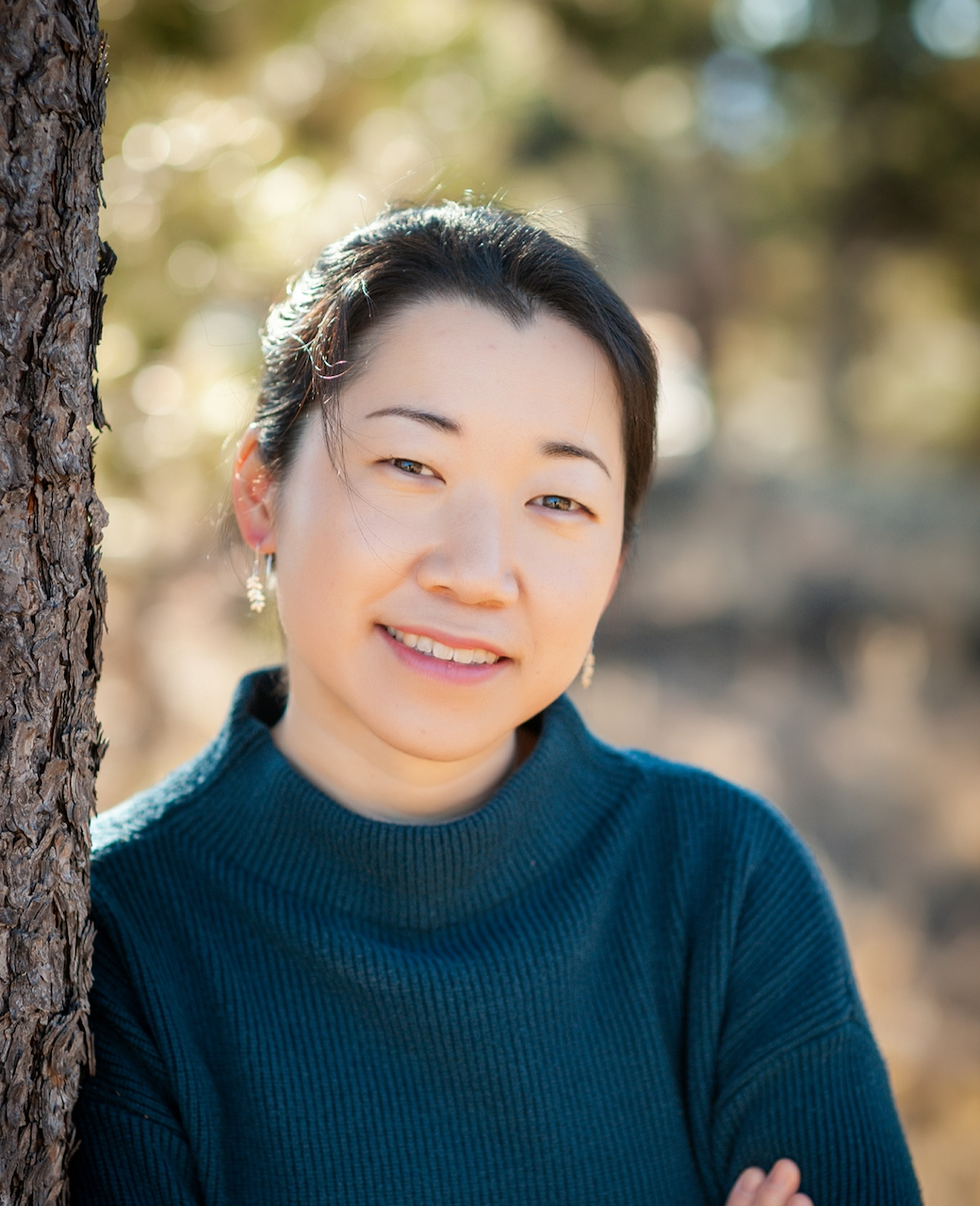In this house with small children, the Christmas season brims with magic. The kitchen sends out tantalizing smells from soup pots and baking pans; a regal Fraser fir stands indoors, adorned with delicate strands of lights and all sorts of pretty baubles. Even the early sunsets bestow a sense of mysterious, grown-up privilege to little ones who are accustomed to falling asleep with summer’s light still fading in the sky.
We’ve welcomed Advent and Christmas with whole hearts this year, and I’ve been enjoying these weeks of preparation and anticipation as much as anyone else in our home. I love slowing the car to hear our wee folk marvel at illuminated houses, and gathering them on the couch for story after favorite story. The Year of the Perfect Christmas Tree; the field mice carolers’ scene from The Wind in the Willows; the bright new tin cups and candy sticks in Little House on the Prairie, so splendidly delivered by Mr. Edwards: our collection of revisited tales grows each year, and our readings add an almost palpable contribution to the radiant warmth of home.
But in the evenings, after we tuck the children into bed, I close the curtains against the night outside — and this slight motion at the window abruptly awakens memories of other scenes from our books.
Drawn into the enchantment of Christmas Past, Ebenezer Scrooge watches a bygone ball at Fezziwig’s with “his heart and soul… in the scene.” The impoverished Little Princess, Sara Crewe, peeks into “houses whose windows [are] lighted up” while hurrying about on errands, looking intensely at the people within “because she [is] hungry for the warm, merry life” they betoken. Laurie in Little Women confesses outright:
“Why, you see I often hear you calling to one another, and when I’m alone up here, I can’t help looking over at your house, you always seem to be having such good times. I beg your pardon for being so rude, but sometimes you forget to put down the curtain at the window where the flowers are. And when the lamps are lighted, it’s like looking at a picture to see the fire, and you all around the table with your mother.”
These isolated characters — three among many that I could name off the top of my head — are drawn to the light that escapes from golden windows out into their own gray lives. What they observe is a far cry from their own harsher realities, and they cannot reach simply across time or through glass to join the celebration.
For every merry gathering place in literature, somewhere else — even right outside the glittering panes — there is an unanchored soul standing alone.
I know this vantage point intimately, and over time, I have found that many others do as well, because the same scene happens in real life. I’ve seen depression, anxiety, fear, sickness, loss, and trauma build walls of isolation in front of loved ones, and been rooted to the spot as the same has happened to me.
The Christmas season can especially highlight the stark distance between where we are and where we deeply, achingly wish we could be. Light conversations seem irrelevant; trimmings and traditions lose their luster, and cheery carols ring hollow or else fade all too quickly from the ear. We are outside all the action, watching through the windows; inside are others’ celebrations in which we feel we have no place. Inside are our own Christmases Past, or Imagined, with wellness of being and relationships made whole. If we could only have our healing or a loved one returned to us, how glad we would be to join in the revelry — but, Jesu juva, there is no way through the wall.
With this isolation in mind this year, I’ve been grateful for the reminder from all quarters that Christmas isn’t a time of artificial merriment intended to lighten a doleful view of life. Instead, both Advent and Christmas fully acknowledge how dark and broken our world is at its worst, and how it echoes the silence and the agonized cry of the centuries leading up the road to Bethlehem.
Christ came to this very world, and the manner of His coming bears fresh poignancy to me this season. The King of Kings, who would later tell us that the Son of Man had no place to lay His head, chose to arrive when there was no room in the inn; He chose not to come into any place of honor or belonging.
[H]e had no form or majesty that we should look at him,
and no beauty that we should desire him.
He was despised and rejected by men,
a man of sorrows and acquainted with grief…
(Isaiah 53:2b-3a, ESV)
The Christmases we spend in quiet corners and in brokenness may bear greater kinship to the setting of the original event than all the caroling we could do over cocoa and cookies. From birth to death, Jesus took up a life outside the lighted windows of the world, and He did so intentionally.
He entered the very space where I dread to dwell: the hours when nothing seems large enough or able enough to push away the encroaching sense of hopelessness.
But Christ did far more than merely join us in our suffering and isolation. The multitude of the heavenly host cheered because it knew His birth was an act more profound and mysterious and redemptive than we could ever dare to dream.
This year, every good and true story that has drawn me to Him bears the same theme as that moment in Bethlehem: unlooked-for hope born in an unlikely place. I have watched peace prevail in crippling uncertainty and full hearts come to worship Him in the face of staggering problems, and one thing is increasingly evident: our Lord brings light wholly different from the kind that pervades our ideas of happy normalcy.
We would have the light of our ideal situations, fleeing the blackness of our fears; His shines in the darkness, and whatever depths it enters, it cannot be overcome.
The existence of such light amid such darkness calls for both the joyful feast and the solitary fast. And so we have a strange mix of both in our house this month: story time during the day and sober thoughts at eventide, once-a-year treats and restricted diets, current news of terrible suffering alongside thanksgiving in our prayers. All of us who draw breath have darkness still, and sometimes it threatens mightily to overwhelm. But in this period of watching and waiting for Christmas morning, I’m reminded to look for the manifestations of His presence — to come behold the Light of the World as He transforms our lives.
The curtain falls over another hushed night here, and outside, the fairy lanterns on our backyard sapling flicker on over the snow. I imagine that for the shepherds keeping watch over their flocks in the night, the coolness and the quiet made it easier to see the stars, and to hear the angels sing.
If yours is a Christmas spent in shadow, friends: I pray that, again and again, as we get up and go over to see what work God is doing in the dimmest spaces of our lives, we will gain renewed hope in Him. Hope that helps us recognize that the heart of the celebration is with us, out here amid our need and our tears;
Hope as startling as the newborn cry of the Eternal that rocked the barren world.
It is with great joy that I welcome beloved writer Amy Lee to join us in The Cultivating Project.
Amy’s exquisite writing has mesmerized and sung to me since the first time I read her work and I have been enchanted, comforted, inspired, and nourished by her ever since.
May your blessings be many this Christmastide and a light always shining in the window for you.
Amy Baik Lee is a contributing writer for Cultivating Magazine and the Rabbit Room, a literary member of the Anselm Society Arts Guild, and the author of This Homeward Ache. A lifelong appreciator of stories, she holds an MA in English literature from the University of Virginia and still “does voices” when she reads aloud. She writes at a desk that looks out on a small cottage garden in Colorado, usually surrounded by her husband’s woodworking projects, her two daughters’ creative works, and patient cups of rooibos tea.
Leave a Reply
A Field Guide to Cultivating ~ Essentials to Cultivating a Whole Life, Rooted in Christ, and Flourishing in Fellowship
Enjoy our gift to you as our Welcome to Cultivating! Discover the purpose of The Cultivating Project, and how you might find a "What, you too?" experience here with this fellowship of makers!




Thank you, Amy. This piece touched me deeply. You have so carefully articulated the tension we experience as Christians—living between the already and the not yet. I very much appreciate your balanced approach to the Advent and for the reminder that the season will hold a much more profound meaning if we are able to open to the reality of our own darkness and that of the world. “If I say, surely the darkness will hide me and the light become night around me, even the darkness will not be dark to you. The night will shine like the day for darkness is as light to you.” There is no darkness within or without the Light cannot vanquish. I would guess that you have read C.S. Lewis’s poem, “The Turn of the Tide.” My husband and I have read it aloud every Christmas Eve for the last twenty years. Your post has given me the idea of reading the first part of the poem nightly (before the tide actually turns in the poem) and then reading the entire poem on Christmas Eve. It seems it might become a valuable practice. Wishing you and your family a very Merry Christmas. I look forward to reading more of your work.
Patricia, I’d never read “The Turn of the Tide” before, but looked it up tonight. Thank you for introducing me to it! I’m looking forward to reading it over again in the days to come, and I think your idea of cycling through the first part up until Christmas Eve would be a beautiful practice indeed. I find that with myself, a deeply felt awareness of the surrounding darkness can be a mercy in that it leads me to ponder the power and range of His light at greater length — thanks be to God for the Turn! Thank you for your very kind words, and I hope you and your family have a very Happy Christmas as well.
Dear Amy, This was a lovely and thoughtful essay! I am so pleased to meet you, a fellow lover of books and of our Beloved Dayspring who shines in the darkness and brings hope to startle our vision. I am learning anew just how true your words are: “His [light] shines in the darkness and whatever depths it enters, it cannot be overcome” and to keep my eyes wide open “to look for the manifestations of His presence — to come behold the Light of the World as He transforms our lives.” Thank you for this reminder to stay awake! (Also: I, too, say the occasional “alas.”)
Thank you, Kimberlee! I’ve enjoyed your pieces here on Cultivating and a few at GraceTable, and it’s a pleasure to meet such a kindred spirit!
I’ve read this several times, it is so beautiful and quieting. I’m sending it to a dear friend who had to rush off on an airplane on Christmas Day to go to her sister in the hospital, not expected to live long. I know it will encourage her deeply. Thank you Amy, and also Lancia for the beautiful photos.
Terri
Thank you, dear Terri! It’s an honor to be part of such encouragement.
Amy, my friend wrote back to say that she had been struggling because her mother died over Christmas long ago, then her husband two years ago, and this year she was called to her sister’s bedside in AZ on Christmas Day, with the likelihood of her passing very soon. This dear lady said your post was very comforting and deeply encouraging. I thought you should know how it blessed her!
Terri, that is truly humbling. Thank you so much for sharing her response with me.